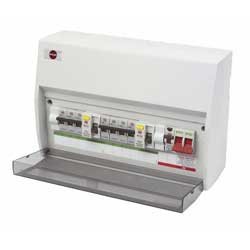Whenever you are dealing with any sort of electrical appliance or circuit it is essential that you follow some basic, but important, safety rules. If at any time you are not sure what you are doing, stop and speak to a professional.
1. If you are making any sort of repair to a electrical appliance, unplug it from the socket before removing even the first screw.
2. Always use the correct tools when working with electrical circuits. Using a kitchen knife to unscrew connectors or replacing fuses with a solid metal bar (we have seen this done…) is a really bad idea. If you plan any work on your electric circuit, borrow or buy a voltage tester if possible (at the very least get a electrical screwdriver) so that you can check if current is coming through wires before you touch them.
 3. When you are dealing with any part of the electrical circuit, turn off the power at the main switch on the consumer unit. If you do not know where your consumer unit is, have alook now and take note of the various switches. In the event of electric shock, you need to be able to turn off the the power quickly and this is where you will need to do it.
3. When you are dealing with any part of the electrical circuit, turn off the power at the main switch on the consumer unit. If you do not know where your consumer unit is, have alook now and take note of the various switches. In the event of electric shock, you need to be able to turn off the the power quickly and this is where you will need to do it.
4. Double check any new connections you have made before switching the power back on. If in doubt, triple check. Incorrectly connected wires in a new ceiling fan might just trip the safety switch on the consumer unit when you try it, but it might also do damage to the circuit or the fitting.
5. Use the right fuse. Fuses are designed to blow in the event of an overload of current, so fitting a fuse which is rated too high for the circuit is very dangerous.
6. It is a good idea to wear rubber soled shoes when carrying out electrical repairs or maintenance. This will help to insulate you and could reduce the effect of an electric shock.
7. If you are unsure, call in the professionals.


